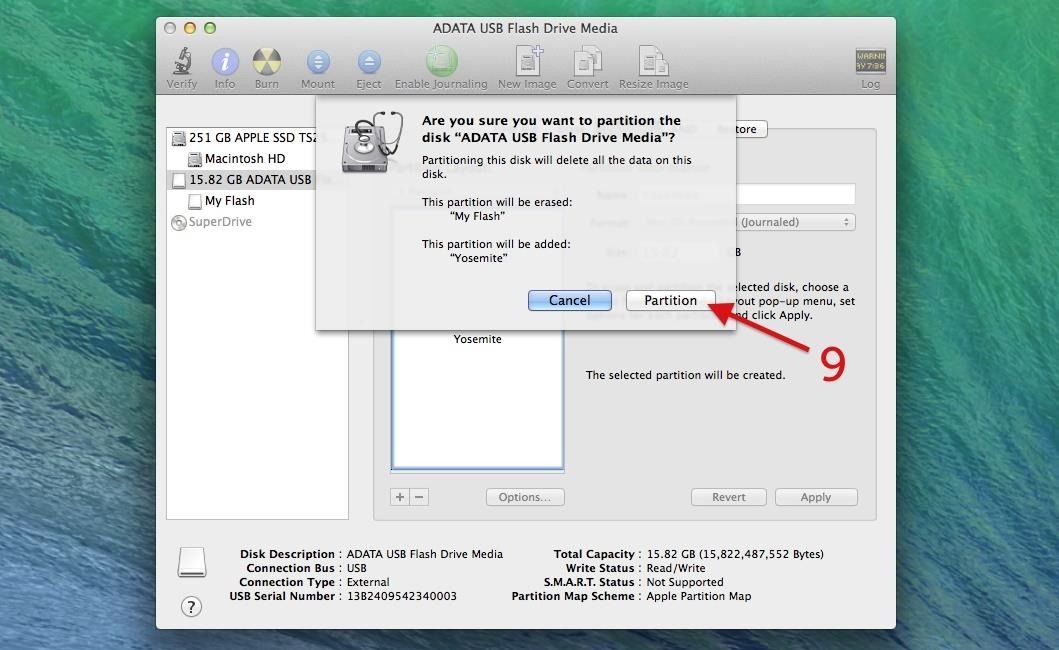

- #What partition scheme for mac bootable usb how to#
- #What partition scheme for mac bootable usb mac os#
- #What partition scheme for mac bootable usb upgrade#
- #What partition scheme for mac bootable usb pro#
- #What partition scheme for mac bootable usb Pc#
I hope the above guide is helpful to you.
#What partition scheme for mac bootable usb Pc#
Like I said, if you want to use the device for both a PC and Mac, you should consider reformatting it to exFAT once you figure out the drive isn’t with another file system.
#What partition scheme for mac bootable usb upgrade#
Thankfully, exFAT - a strict upgrade over FAT32, is a file system optimized for USB flash drives. That makes using the drive a bit troublesome on Mac machines.įAT32 is popular but the 4GB file-size limit makes it inconvenient, for instance, when you want to make a bootable macOS Sierra USB drive which the system file takes about 8GB of storage space according to Apple. Most of the external hard disks and flash drives are formatted for Microsoft Windows operating systems.
#What partition scheme for mac bootable usb how to#
#What partition scheme for mac bootable usb pro#
Pro tip: chances are that you may encounter some issues formatting a flash drive on a PC or the disk is malfunctioning.
#What partition scheme for mac bootable usb mac os#
A Mac will want either Mac OS Extended (Journaled). The quickest way is to search on Spotlight and click the result under “TOP HIT.”Īlternatively, you can access it via Finder > Applications > Utilities > Disk Utility. Master Boot Record for older computers and GPT for newer ones and Macs, but thats just the partition scheme. The app now has a new user interface that looks slightly different on Yosemite or earlier OS X versions. Please note: since OS X 10.11 El Capitan, Apple made a few changes to Disk Utility (see details from this ComputerWorld article). The first part is for Mac users, and the second part is for PC users (Windows 10 based). Read this USB drive data recovery guide for more information.Īlso, since I don’t know whether you are on a PC or Mac to perform this operation, I’m here to break down this guide into two parts. Because the process of reformatting a disk drive will very likely erase all content and make recovery impossible. Important: make sure you have at least one backup of all the data stored on the device before you proceed. How to know what current file system your flash drive is with, and how to format it to exFAT? Now that you’ve learned exFAT is the ideal file system to go. This is because an NTFS-based drive can be read by macOS but you can’t write data to the drive. You may notice that NTFS is marked “Partially” under the Compatible with macOS column. You should go ahead and format your storage drive with exFAT instead of FAT32, assuming that all devices you want to use the drive support exFAT. Therefore, it’s perfect for a USB flash drive or external disk, especially when you need to save files more than 4GB in size. See the table below for more info.Īs you can see, exFAT is the only file system that works with all versions of Windows and macOS and does not have any max file-size or partition-size limits. Note that there is another file system called FAT32 that pretty much does the same thing but with one major flaw. In other words, you can access the drive and transfer data without any hassles. If your disk was initially formatted to NTFS on a PC (or HFS+ on a Mac), most likely you’ll suffer limitations, for example, the data on your drive can’t be read or written on one of your computers.įortunately, there is a file system (actually two, I’ll explain) that you can format your flash drive to be fully compatible with Mac and PC. If you have a USB drive, and you plan to use it on both a Mac and PC, things can get a bit tricky here. By default, Macs are with HFS+ (since 2017 there’s a new Apple File System, APFS, optimized for flash storage), while PCs are with NTFS. But the "Scheme" popup menu does not appear in the panel.It’s no surprise that PCs and Macs do not work well with each other, due to differences between the two operating systems (Windows vs.

If I select the secondary item in that list (Lexar), I can successfully do a format operation.

No matter what Scheme I choose, I get an error when trying to format the item higher in the hierarchy in the sidebar to the left (Lexar USB Flash…), as shown in the screen shot above. Mysterious error when formatting higher item The third one ( Apple Partition Map) is for booting old Macs (68K and PowerPC rather than Intel chips). Why is this offered as a scheme for "Mac OS Extended (Journaled)"? That really threw me, and prompted this Question. The second one ( Master Boot Record) is old, from the 80's DOS 2, for old PCs. Booting is not an issue for my use of this flash drive. I know the first one ( GUID Partition Map) is for booting modern Macs. When using Disk Utility 16.3 with macOS Sierra to format a "thumbdrive" USB 3 Lexar flash drive (64 gigs), when I choose a Format of ‘Mac OS Extended (Journaled)’, I get a list of three Scheme items:


 0 kommentar(er)
0 kommentar(er)
